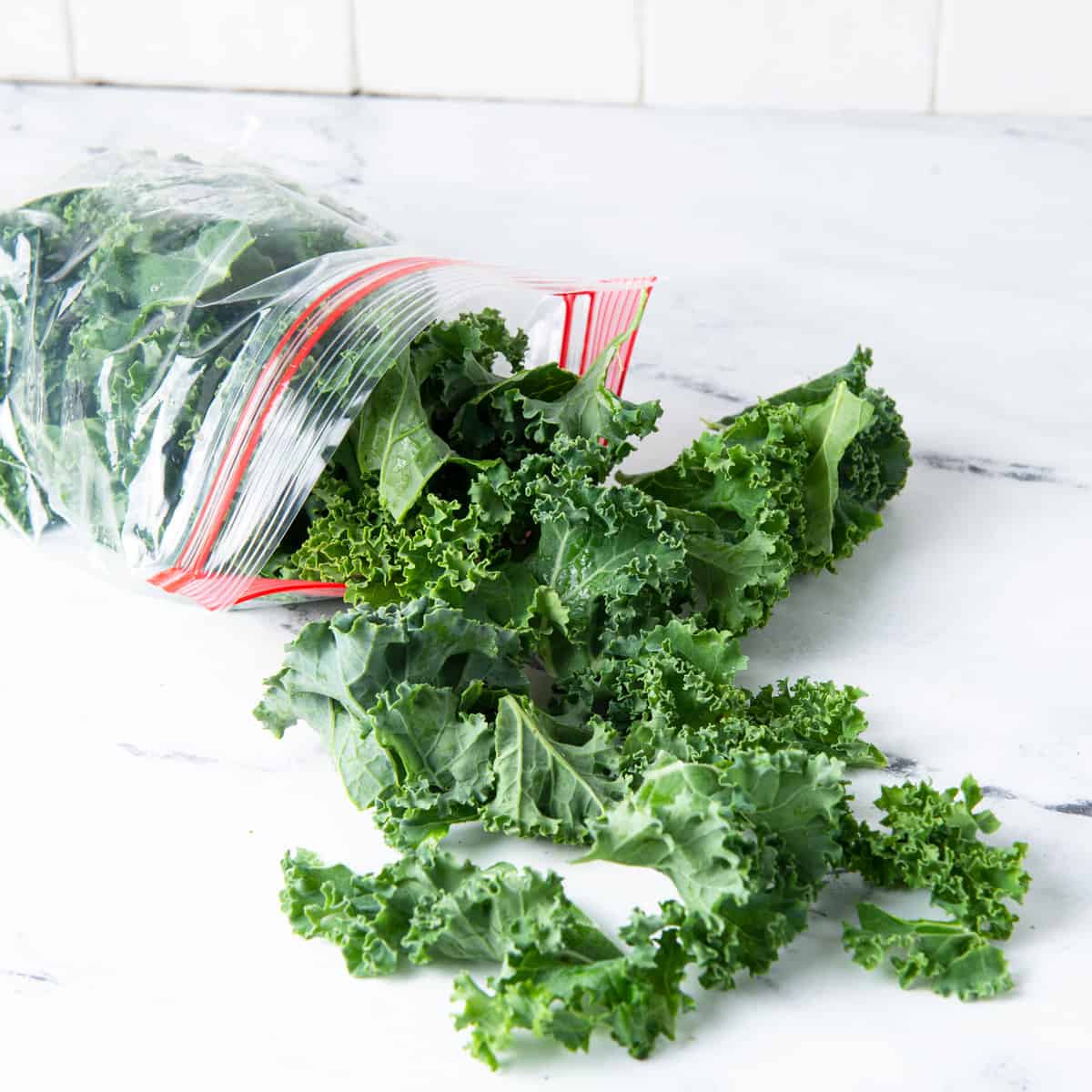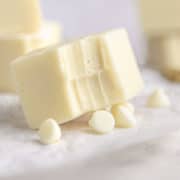Some people love these leafy greens while others prefer to steer well clear. Either way, knowing how to store kale is important so you can keep fresh kale fresher for longer.

Jump to:
Whether you're making a smoothie, soup, stew, or salad, this nutrient-dense veggie makes a tasty addition. Crispy kale can also be served as a potato chip alternative and you can also add it to braises and roasts since it doesn't fall apart like some veggies do.
I love to make kale mashed potatoes by boiling potatoes and kale, then draining and mashing in butter, salt, and black pepper. This is also a nice way to disguise kale that perhaps isn't as fresh as when you bought it.
What is Kale?
Kale (Brassica Oleracea) is a member of the Brassica family, which includes Brussels sprouts, broccoli, and cauliflower too. It's thought to have originated in the Asia Minor and eastern Mediterranean areas and has been around for thousands of years.
The ancient Romans and Greeks enjoyed it and kale was also a popular addition to the Europe diet in the Middle Ages. English settlers introduced this leafy green vegetable to the United States in the 1600s.
Kale has the reputation of being a "superfood" because it's rich in antioxidants, vitamins, and minerals. As well as calcium, potassium, and iron, this cruciferous vegetable contains Vitamins A, C, and K.
There are different varieties of kale plants, including curly kale, the most common. If you find curly kale bitter, try the milder Red Russian kale which has pink stalks and blue-green leaves, or red kale which has red and purple stalks. Lacinato kale, also known as dinosaur kale or Tuscan kale, is another tasty choice.
How to Select the Best Kale
When shopping for kale, look for rigid, sturdy leaves that don't have brown or yellow patches. Since grocery store kale might be grown with pesticides, you might prefer to shop at your local farmers' market or else choose organic kale.

How to Store Kale
Once you know how to store kale, you might like to keep some on hand because you can use it in all kinds of simple recipes. The good news is that kale is hardier than spinach or lettuce so it will stay crisp and fresh for longer than either of those, so long as you choose the best place to keep it. The following tips work for any variety of kale.
- If you have a bunch of kale, keep it away from excess water. Wrap it in paper towels then keep it in a Ziploc bag or plastic bag in the fridge crisper drawer and use it within a week.
- If you want to prep it ahead, chop or tear the leaves, rinse, and dry with paper towels or in a salad spinner. Wrap in a layer of paper towels and store in a Ziploc bag or plastic bag with the excess air squeezed out, in the crisper drawer for up to 3 days.
- If you buy bagged kale, your best option is to keep it in the bag in the crisper drawer and check the use by date on the packaging.
- If you prefer to freeze the kale, the best method is to boil the leaves in a large pot of water for 1 to 2 minutes, then drain and plunge into ice water or an ice bath to stop the cooking process. Dry it with a salad spinner or kitchen towels to remove excess moisture, and then freeze the leaves for 2 hours on a baking sheet before transferring them into freezer bags or an airtight container. You don't have to thaw frozen kale before use - just add a handful to your smoothie or whatever recipe you're making and it will thaw quickly.
Leftover cooked kale has a shelf life of up to 4 days if you keep it in an airtight container or plastic bag in the refrigerator. You can then reheat it on the stove or in the microwave, or else have it cold.
How to Recognize Rotten Kale
Even though kale is tougher than lettuce or spinach, it can still wilt and go bad, so it's a good idea to carefully inspect kale before buying it. Spoiled kale might have yellow or brown patches or be slimy, moist, and limp. Rotten kale might be moldy, in which case throw it out immediately.
Common Questions
Kale can be fibrous and tough, but you can still enjoy it raw if you know how to tenderize it. Chop or tear the kale leaves then toss with a splash of vinegar or lemon juice and massage the leaves between your fingers for a minute or so. This isn't necessary for baby kale or if you're planning to cook the kale. Another option would be to marinate it in something acidic, such as vinaigrette because this will also make it less chewy. If you're marinating it, you can skip the massage. Also, the smaller you cut the pieces, the less chewing is involved.
Do you throw your kale stems out? If so, you might be interested to know you don't have to have food waste because they're edible and can actually taste good. You can add them to braises and stews, boil them until tender or stir-fry them in olive oil. It's best to cook them by themselves because they take longer to tenderize than many other soft vegetables. You can also pickle kale stems in a salt, sugar, vinegar, and water mixture.

Interesting Facts
- Fall, spring, and late summer are peak kale season, although you can find it at grocery stores all year round.
- Despite kale being a powerhouse of nutrition, you can get a big bunch of it for just a few dollars.
- Since this hearty green vegetable is rich in Vitamin K, you should consult your doctor before eating it if you take blood thinners.
Now you know the best way to store fresh kale, you can make all kinds of yummy dishes from green smoothies to kale salads, kale chips, and hearty stews.














